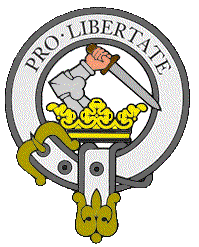 Marion Braidfute, wife of William Wallace, was a fictional character concocted by medieval biographers, a leading historian has claimed. Braidfute, who was supposedly murdered by the Sheriff of Lanark, triggering Wallace’s rebellion against the English, was created more than 200 years after his death to heighten the political standing of a noble family, according to new research.
Marion Braidfute, wife of William Wallace, was a fictional character concocted by medieval biographers, a leading historian has claimed. Braidfute, who was supposedly murdered by the Sheriff of Lanark, triggering Wallace’s rebellion against the English, was created more than 200 years after his death to heighten the political standing of a noble family, according to new research.
In Mel Gibson’s 1995 film Braveheart, the brutal murder of Wallace’s wife (whose name was changed to Murron MacClannough, and was played by the actress Catherine McCormack) is portrayed as a pivotal moment in his transformation into a revolutionary hero. However, Ed Archer, an authority on Wallace, has found no mention of her in the earliest accounts of his life Blind Harry’s “The Wallace,” an epic poem written in about 1508, refers to a woman called Innes, who is credited with helping Wallace escape from the clutches of English troops. There is no suggestion that she was his lover or his wife. Braidfute does not appear until 1570, in a revised edition of Blind Harry’s poem, possibly commissioned by the Baillies of Lamington, a wealthy family from Lanark who hoped to ingratiate themselves with Mary, Queen of Scots by claiming to be Wallace’s descendants. In the revised text, Braidfute, from Lamington, Lanarkshire, is described as Wallace’s lover and the mother of his daughter, from whom the Baillies of Lamington claim to be descended.
However, a study by Archer of contemporary historical records found no mention of any Braidfutes living in the area at the end of the 13th century. “Dispelling the myth of Marion is important because we should try to get at the truth beyond the romance that surrounds Wallace,” said Archer. “What lies at the heart of this is the political aspiration of a local, minor aristocratic family who wanted to gain favour at the court of Mary Queen of Scots by claiming to be descended from William Wallace. “There is still mileage in Wallace and there are still things to be discovered about him. People have avoided Blind Harry’s 1508 version of the Wallace story because it is not an easy read.”
 Ian Scott, Chairman of The Saltire Society, said he was surprised by Archer’s discovery. “The story of Wallace’s wife and what happened to her is thought of as a trigger event in his life and is key to the story of the man himself,” he said. “New discoveries will continue to be made about Wallace’s life because so little of the hard historical fact is known.” John Murtagh, who played the turncoat nobleman Lochlan in Braveheart, said he had always believed that Wallace’s wife was a symbolic figure. “To me his wife has always been a metaphor for Scotland itself,” he said. “And so when the English try to rape, and then murder her, it is symbolic of the way Scotland was treated.”
Ian Scott, Chairman of The Saltire Society, said he was surprised by Archer’s discovery. “The story of Wallace’s wife and what happened to her is thought of as a trigger event in his life and is key to the story of the man himself,” he said. “New discoveries will continue to be made about Wallace’s life because so little of the hard historical fact is known.” John Murtagh, who played the turncoat nobleman Lochlan in Braveheart, said he had always believed that Wallace’s wife was a symbolic figure. “To me his wife has always been a metaphor for Scotland itself,” he said. “And so when the English try to rape, and then murder her, it is symbolic of the way Scotland was treated.”
Little is known about Wallace’s life before 1297, when he killed Sir William Heselrig, the English-appointed Sheriff of Lanark, and then led a popular uprising. His greatest victory took place at the Battle of Stirling Bridge in 1297, at which he routed the English army and was later proclaimed Guardian of Scotland. Archer presented his findings last year, at a conference on Wallace’s life hosted by the Lanark Archaeological Trust, part of a series of events commemorating the 700th anniversary of Wallace’s death.
As originally published in the Guardian, Spring 2006
